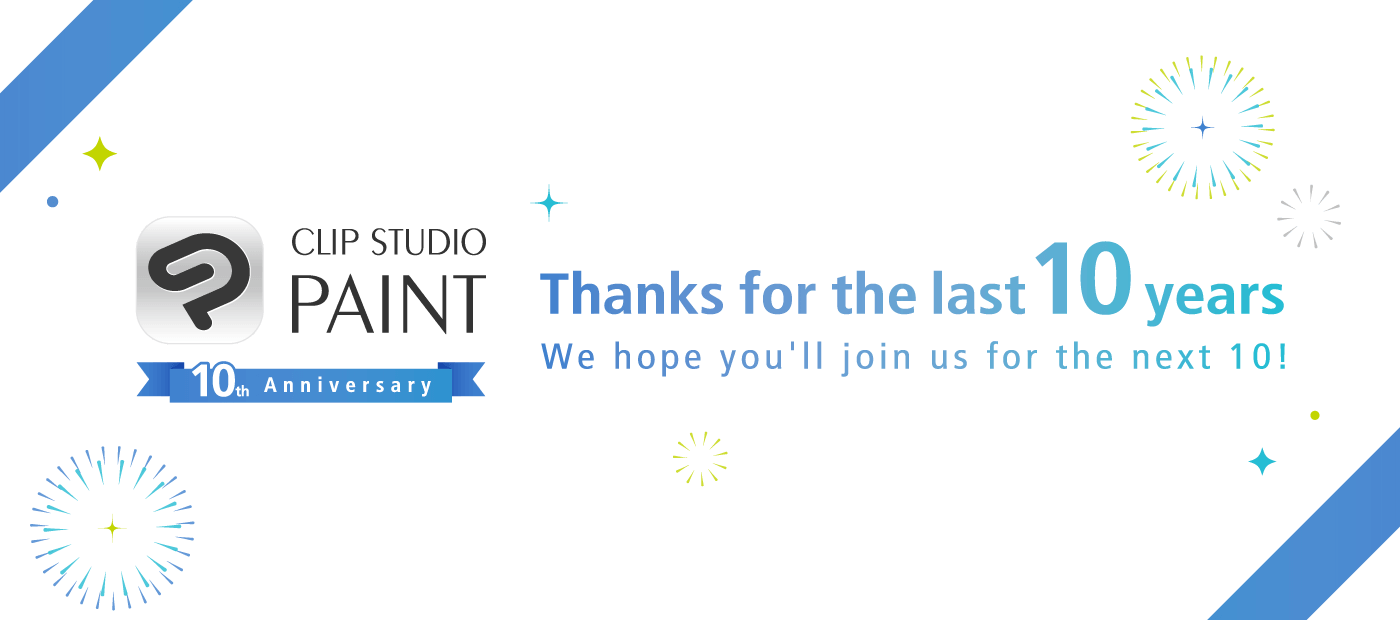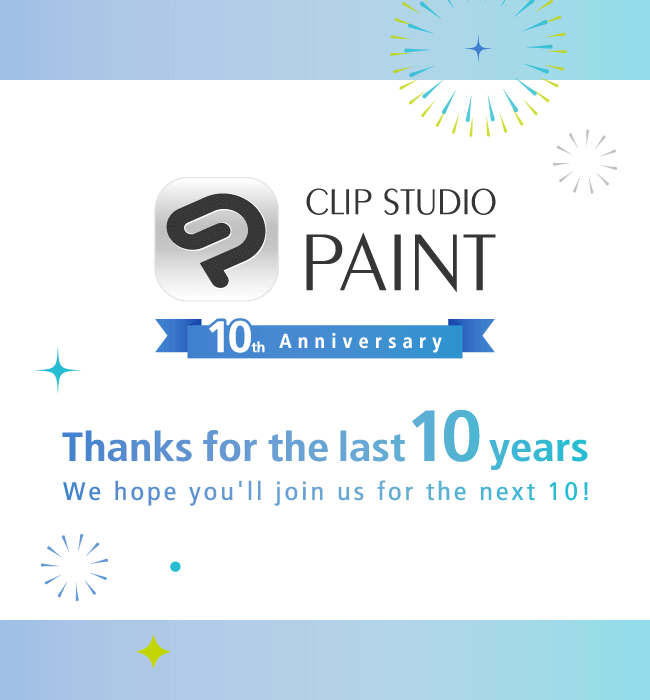







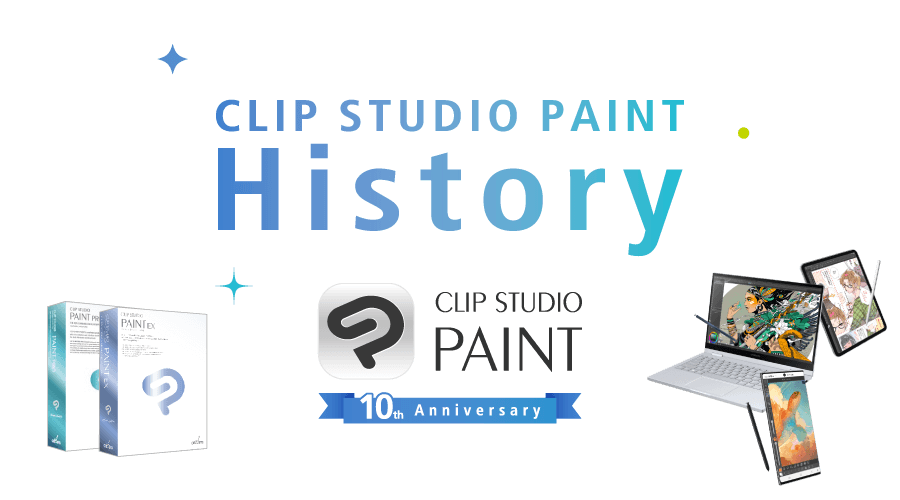








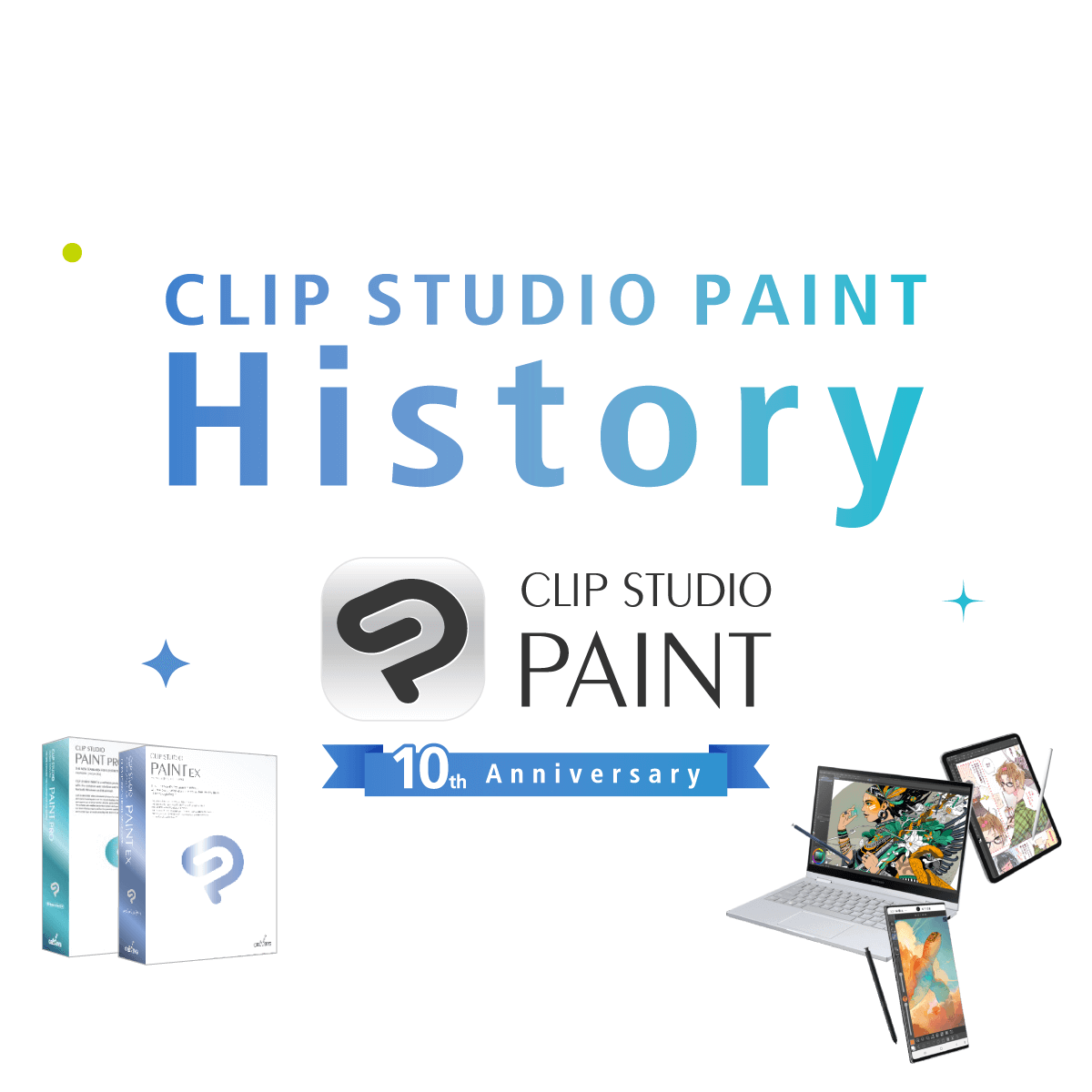


















Clip Studio Paint turned 10 in May 2022.
Thanks to the support of all creators,
Clip Studio Paint has continued evolving over the last 10 years.
Hear the behind-the-scenes of Clip Studio Paint from development, testing, marketing, services, and support - from the people who were really there.
2012: from development to release
Development on Clip Studio Paint started around 2010.
Let’s take a look back on the thought and hard work that went into that process.
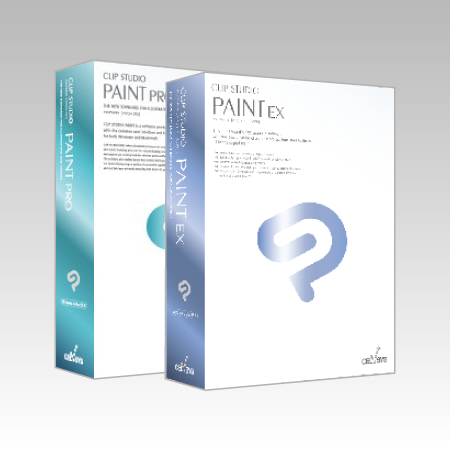

The catch phrase for the software at that point in time was...
“A premiere paint tool that crosses beyond genres to spark creativity in all.”
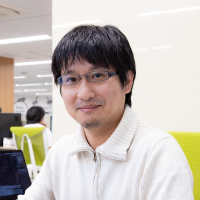
How did this project start out?
Yokotsuka: I started on the development 2 or 3 years before the release. Currently we have over 20 members on the team, but back then it was only 5 or 6 people. I remember we started off with a bootcamp to concentrate on the direction we were taking with the development as the app had to be made from scratch.
Was there something that you paid special attention to during development?
Yokotsuka: Something that I took special care in programming was the pen rendering. I spent weeks adjusting and readjusting the pen until I could be satisfied with how the pen reacted once you ended a stroke, its correction, and how it expressed pen pressure, all before the test team even got to test it. I think it paid off when we got to the release and knew the app would deliver superior drawing quality. I say this with confidence, but you can never be completely confident when releasing a new app.
I think the test team had a lot on their hands because they needed to do various tests like printing tests. This meant they were printing out dozens of pages on laser printers to test how the screentones came out. I recall that the day before release, the engineers were testing out the program all night long.
What was the origin story behind Clip Studio Paint?
Yokotsuka: CLIP comes from the words “Creator”, “Link”, and “Platform” with the concept that this platform would link creators from all over the world. We hoped it would be a program not defined by any existing media content. At the beginning, the development team gave the app a codename to work with before we had settled on a product name. The Clip Studio Paint development team still refers to the program by its codename from back then though.
Clip Studio Paint was setting its sights globally from 2012
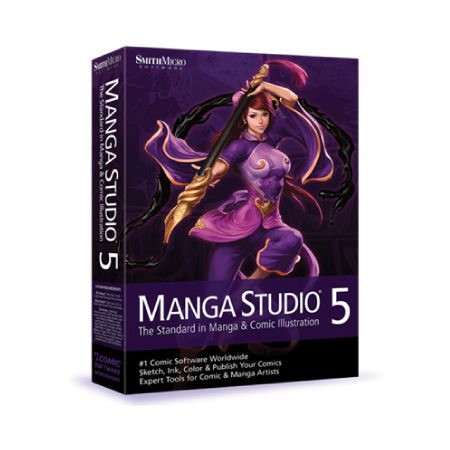
English version “Manga Studio 5” box art
English version sold in North America and Europe.
The name back then was “Manga Studio”.
The name was later changed to Clip Studio Paint and then released in Chinese (Traditional) in 2013, in French and Spanish in 2014, Korean in 2016, and German in 2017. Currently, in 2022, the app comes with support for seven languages.
2013: Manga Perspective added
This unique manga perspective was created by using the technology borne from the Naemura Laboratory in collaboration with Hitachi, Ltd. With this, the deformed, manga style can be replicated with ease. It also came with updates for other comic related functions.

Manga Perspective feature

There were many updates for comics around this time, what was one that stood out to you?
Yokotsuka: When the app was released there was no black-and-white layer. Many comic artists were eager to have it added and I was really happy for them when they got it and wrote back to us. Personally, I develop with the artist in mind, so it really is encouraging to me when I get requests and reactions.
Manga Perspective is a really interesting feature to me, personally. When we were implementing it there were a lot of subtle adjustments behind the scenes and it was a battle to get it good enough for release.
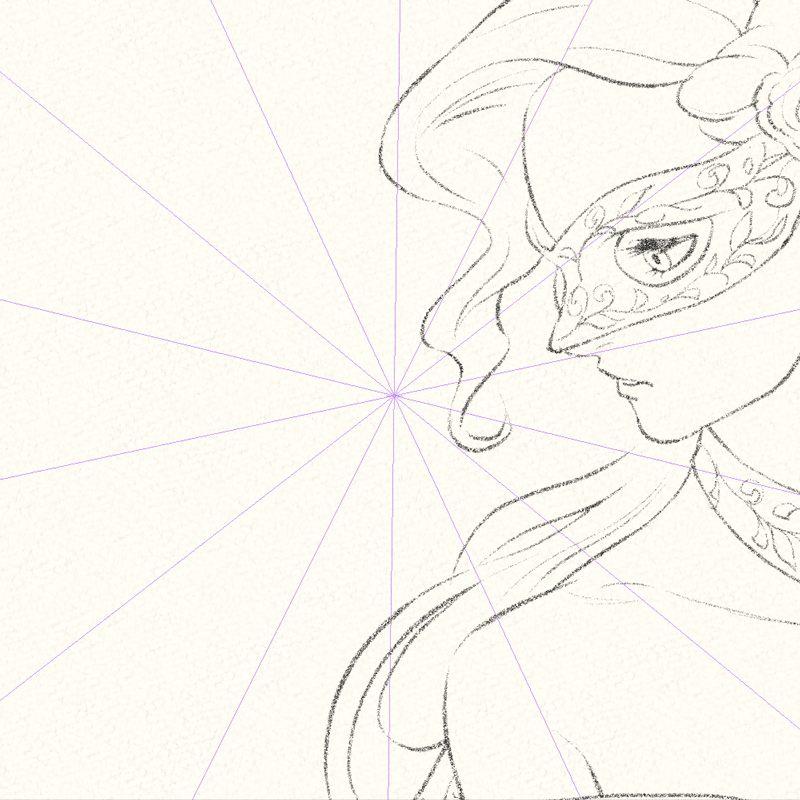
Straight-on faces to delicate lace to snow crystals, to magic circles?! The applications are limitless! This feature is useful just on its own but it also was praised on social media for making the act of drawing more fun. It has been almost 10 years since the feature’s release and people are still writing in about it.
2015: animation suite added
Since Celsys’ establishment, it has been working towards helping animation studios transition to digital. In 2015, the animation suite was added to Clip Studio Paint. There have been numerous updates since then expanding upon this feature.

Animation screen image
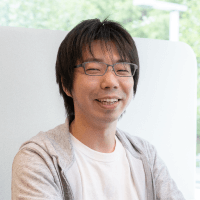
What happened leading up to the release of the animation suite?
Inaba: This was personally a huge achievement for me because the animation feature was so difficult to create, from the initial planning to the actual development. I was in charge of the File object function, which was a huge challenge technologically. To be honest, at the beginning when it was first released we got a lot of flack and got a lot of opinions that were hard to hear. But, since then, in working with a lot of people and companies in the industry, we took on a lot of feedback and implemented it into updates of the app, to the point where it is now used by a number animation companies. Recently many people are trying out animating by themselves, which is a surprise to me. I think it’s interesting to see the methods they animate with and the way they capture expressions because they are different than commercial animation.
Behind the scenes, pre-release
Hear about what goes into the testing of Clip Studio Paint to make sure it is functional for users, straight from the test director.
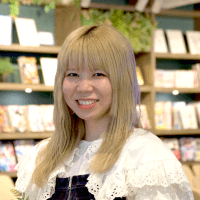
What does the test team do before a release?
Shimada: Clip Studio Paint has a team of about 30 professional testers in-house who work closely with the development team to check all devices through a series of rigorous tests.
We have some testers who have a proverbial “god hand” and are masters of their jobs, skilled at rooting out critical bugs. Many bugs are almost impossible to find under normal test conditions and require a specific set of circumstances. Sometimes you find yourself wondering “How did they set this up to test that?” When these bugs are found they usually can be linked to a larger problem which really helps us all out.
Promotions from back then
Clip Studio Paint has held numerous promos. The marketing department will regail you with stories of how they have been working to help inspire more creation.
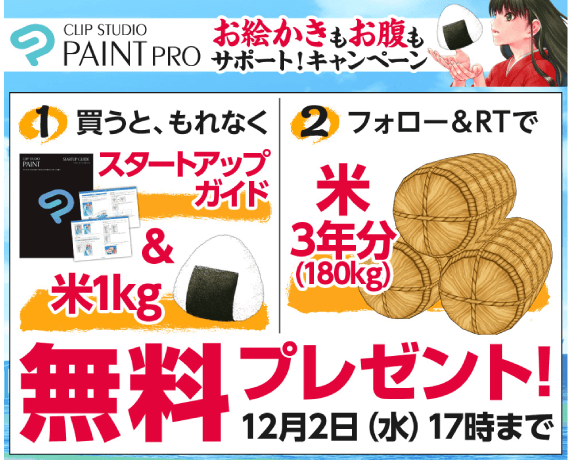
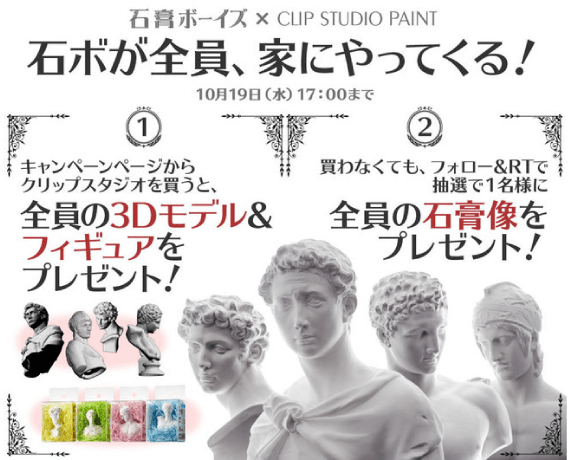

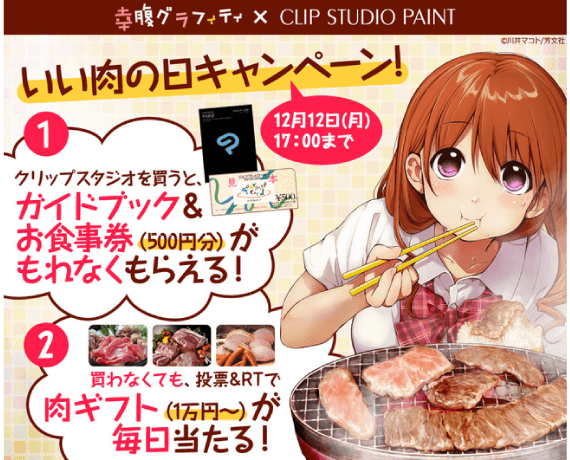
Campaigns were held to win amazing prizes; everything from rice, to plaster statues, to meat, and more.
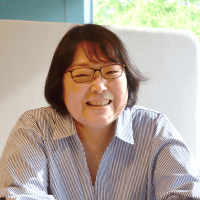
Over the years there have been campaigns to win rice, meat, collaborations with unexpected characters, and more. How did you land on all of those?
Shinta: Campaigns involving food were made with the intent to cheer on creators. The rice campaign was inspired by the thought that creators should be eating foods that only require one hand. One-handed food = rice balls = rice.
The collaboration was something that I just thought we needed to try and go for. We got a lot of rejections for that because nobody knew what Clip Studio was. Nowadays it’s not just manga; games and animation production companies are using us more which helps pave the way for more opportunities.
Was there ever feedback that surprised you?
Shinta: I would often do the shipping of the prizes to the winners and found that when I included a handwritten letter it would be met with joy and uploaded to social media. That surprised me.
What sort of campaigns do you want to do in the future?
Shinta: I want to try collaborations with different industries. We got the opportunity to make animations for a collaboration music video, which I think everyone enjoyed. I have my sights set on collaborations with fashion, architecture, automobiles, and other industries to show new, interesting ways that Clip Studio Paint can be used. (I have no connections to go on however...)
2016: social media sticker function added
LINE stamps became a popular thing for individuals to make and Clip Studio Paint made it even easier by adding APNG file support for animated stickers. Here is a bit about what was happening during that testing.


LINE sticker creation image

How did you go about testing LINE stickers?
Shimada: Testing the APNG file compatible update was very fun for the testers. We enjoyed creating several original APNG following the LINE creation guidelines and uploaded it to the LINE simulator to check the colors and display. There was a time when it was super popular to release your own set of stickers so we received a lot of thanks from creators.
2016: Clip Studio ASSETS goes global
The multilingual support for services started, beginning with Clip Studio ASSETS. With the improvement of machine translation, the language barriers between creators started coming down and creators all over the world could use all our services.

In Clip Studio ASSETS you can get brushes and various other materials as well as upload your own original materials.
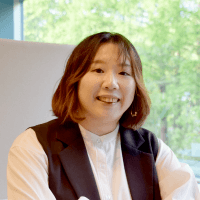
Please tell us about how it was releasing Clip Studio ASSETS internationally.
Yamazaki: We had to renew the interface to make sure that creators from all around the globe could use it smoothly on whatever device or operating system they had. Many users were writing that it was hard to search for materials by name so we created a way to search by Content ID. I think that adjusting the features like this really made me think this had become an international service.
Are there any differences in popularity of materials by region?
Yamazaki: Many popular materials are popular all around the world. Saying that, Japan definitely leans towards black-and-while materials needed for manga while Korea and the West like brushes and color comic materials needed for Webtoon creation.
Recently more top ASSETS in the rankings are from overseas creators, so I think the service is becoming more international.
2017: simultaneous updates in seven languages, overseas events, the big contest boom
Users outside of Japan grew to comprise of over 50% of the userbase and we started doing more international events and contests. Let’s hear from a marketing perspective on what issues appeared and what reactions there were overseas.
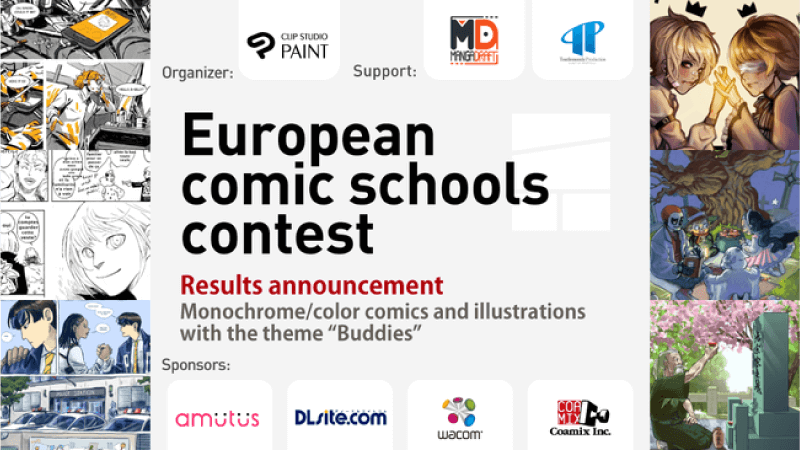
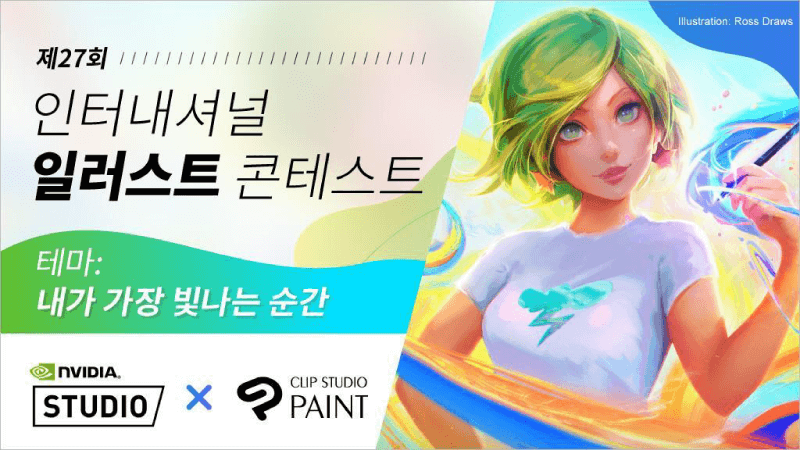

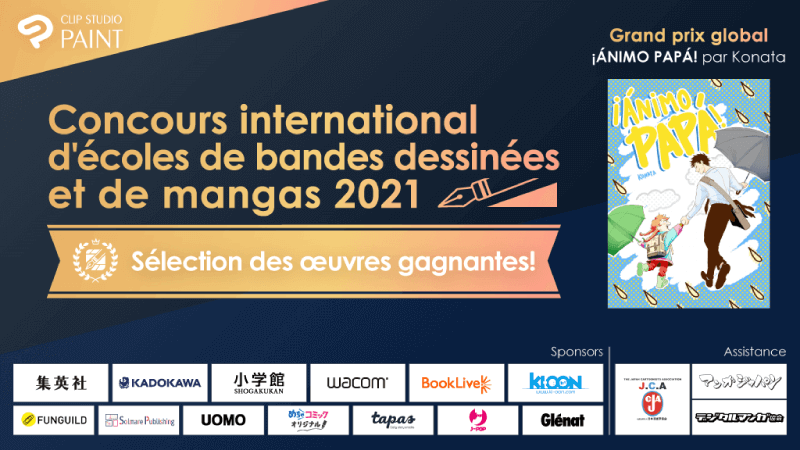

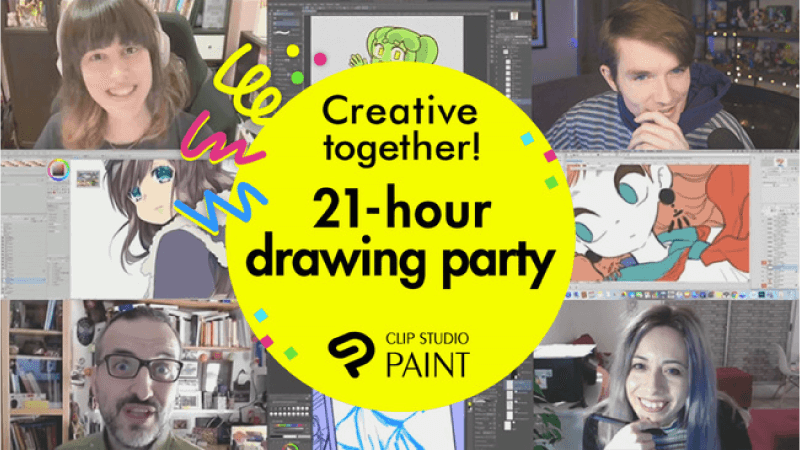
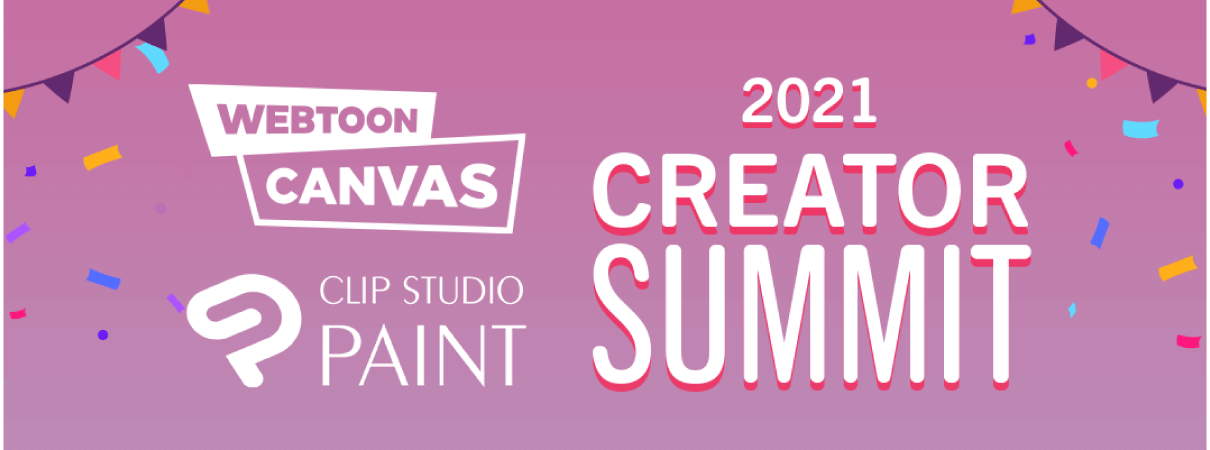
Selected events and contests held up until now
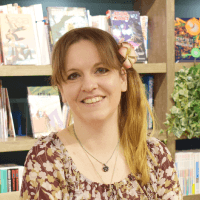
You did many events held overseas but was there one that stood out to you?
Joana: There were many, but I think that the particularly impressive ones were Wacom’s “Connected Ink” and Celsys’ “21-hour drawing party”. I acted as MC for an international 21-hour online drawing party where I could chat and draw with creators from many different countries. It was tough fighting back the urge to sleep during those 21 hours, but I got a lot of inspiration from the creators and it was a lot of fun, despite how difficult it was to execute.
Currently we do regular livestream events from the company. I am happy to do them because they provide some really exciting content for creators. Because we are doing this for the viewers overseas, there is always the issue of time difference. There’s nothing you can do about it resulting in either getting you up early or you staying up late!
There are now also more contests for international creators. Is there anything that you notice that comes with this shift?
Joana: I have to say that it called for a lot more translation. The most outstanding contest in recent years is one that we do yearly, the International Comic/Manga Schools Contest. This is a student contest with students from all over the world entering and submitting many really amazing works. The comics are amazing, but it is also amazing to see younger students enter as well. Translating while keeping the nuance of the work is a daunting task, but I find it an interesting challenge.
A thank-you from international creators
Clip Studio Paint’s user support works hard to ensure that all users can create without worry. Here is the support director with some stories from behind-the-scenes.
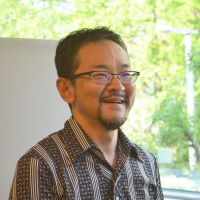
User support receives messages from creators all over the world, what challenges arise from this?
Nakazawa: Now that it’s the past I can say this but, before the English version was released we used machine translation and outsourced to respond to overseas users. Whenever we got an email in English I felt like the userbase really had gone international. After that we released Clip Studio Paint in more languages and the overseas userbase really exploded. Currently we have native speakers on the team who help us think about the cultural background element!
What makes you feel motivated in your work?
Nakazawa: We know that this is an international app with many creators who have deadlines so we work to support them so they can create without issue. Whenever a user writes in with a thank-you in any language we get to see that user as an individual who is cheering us on.
2017: iPad version released
The heavily user-anticipated first new platform release since Windows and Mac.

Clip Studio Paint for iPad

Please tell us what happened leading up to the iPad release.
Inaba: Personally I love Apple products and had been researching the idea since the Apple Pencil was announced, before the project started in the company. It took about 3 months for the prototype to be made and within about a year we could run all features of the program on the iPad. Then it took about a year until the program was ready to be officially released.
Before the release I was taking it home to work on my own art as well. I would find bugs, test its usability, and try to improve upon it. The Edge keyboard came about because I found it was hard to do redo and undo.
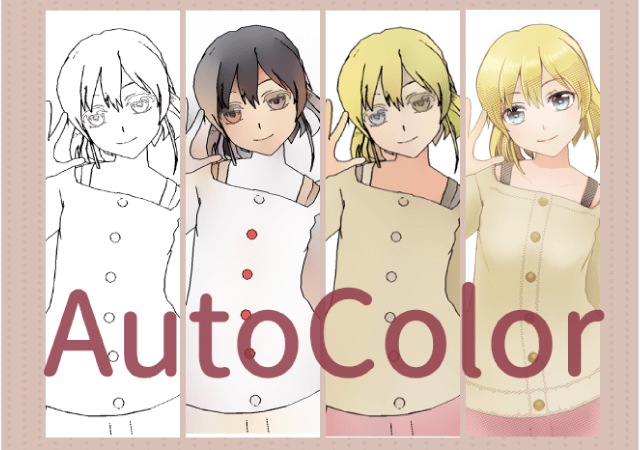
The era of AI doing the coloring for you has arrived?! Other features like Pose Scanner and Remove Tone came about using this AI technology and blew up on social media.
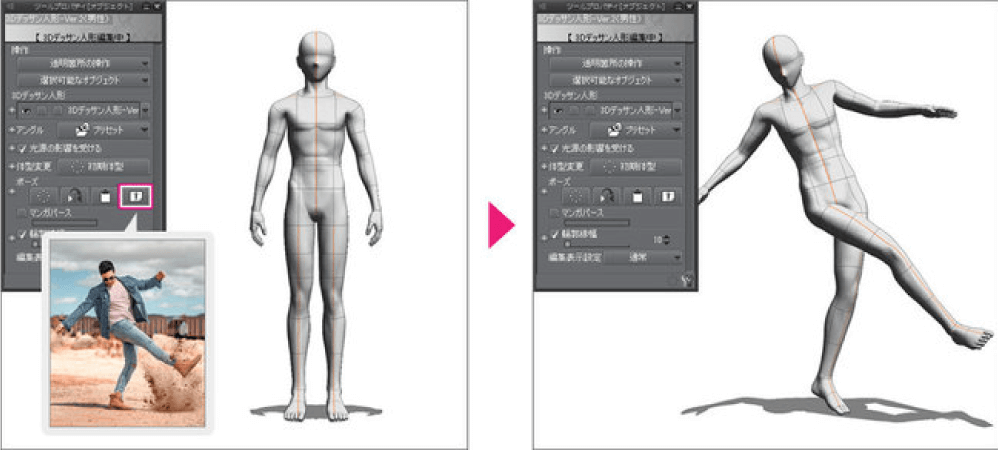
Make whatever pose you want easily by using a photo to pose the 3D drawing figure.

Please tell us about the challenges you faced when developing AI Colorization.
Yokotsuka: It took about a month to get the feature to show results. Each morning we would check the output results and tinker with the parameters that seemed to be tripping the machine learning up and try again...It was a lot of trial and error. I was very moved when we were finally able to add it to the program.
2019: iPhone version released
In addition to the PC and tablet, comes the iPhone version. Users can use the same functions as the tablet and computer on their smartphones to make high-quality creations.
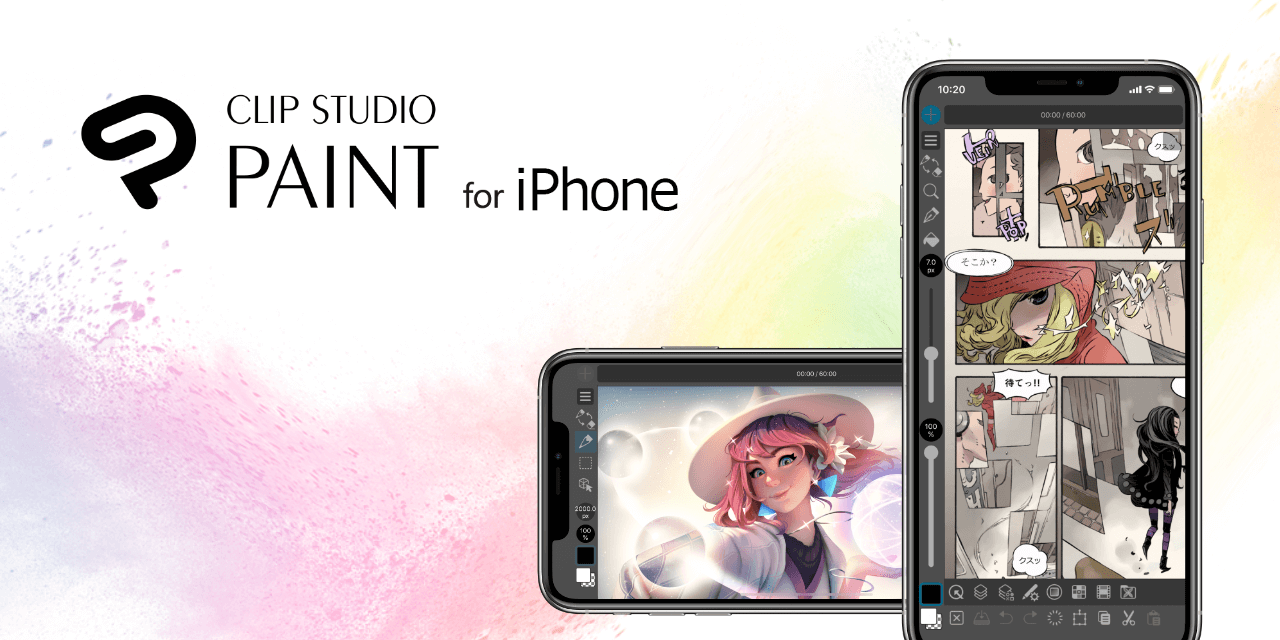
Clip Studio Paint for iPhone

Please tell us what happened leading up to the iPhone release.
Inaba: We actually didn’t need to change anything for the iPad version of Clip Studio Paint to operate on the iPhone. However that meant the iPad UI was just being reflected on the iPhone which didn’t seem usable. It was a battle to get the UI mobile-friendly. We want to have all features available even on mobile devices.
The desktop UI was converted to the current mobile UI but we plan to keep improving it so that it is more intuitive for a mobile device.
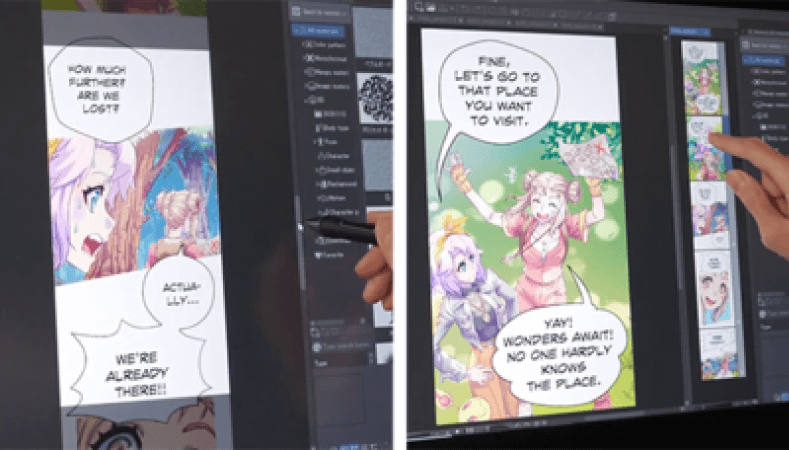
Added functions for vertical scrolling and creating full-color Webtoons, such as smartphone previews and exporting a long canvas by divided into parts.

How do you decide what features get added?
Shimada: Many features are added because of numerous requests from users. We contact users who requested the feature after it gets released in the app. Sometimes it’s trying to see what else everyone wants or what trends are developing. The test team, customer support team, and the development team also join forces to try and figure out the user’s point of view. When we released Webtoon features it was hard to gather information just in Japan so we had to find Korean Webtoon artists to interview, searched a lot online, and developed our plan based on that.
2020: Clip Studio Paint becomes available for all devices
Clip Studio Paint started as a PC app but soon expanded to iPad and iPhone.
In 2020 it expanded even further to include Galaxy, Android, and Chromebook devices to make getting creative even easier. Let’s hear about how it was back then from the development and test team.

Cross-platform support

Was there anything that stood out to you upon making the app compatible with all these devices?
Inaba: I think the most interesting part was when the test team had to procure Galaxy devices from every country all at once to check how it worked. The best part of it being when we had about 70 devices, all just Galaxy.
The Android version development team was 4 people at first and we soon welcomed engineers who weren’t normally involved in Paint, even going to other branches of the group company. Ultimately, we had accumulated the most engineers in the history of Clip Studio Paint, all working on this project.
How does the development team deal with multi-device updates??
Inaba: It was an extremely large number of devices so there was a lot to do on the development side. We introduced a meta-build system and development tools to improve efficiency and reduce bugs in the hopes that creators could use it without being negatively affected by the increase in compatible devices and multilingualization.

What sort of changes did the multiple device compatibility bring to the test team?
Shimada: In the past we just had to check how the app worked on Windows and Mac computers. When it ballooned to iPad, iPhone, Chromebook and Android tablets and smartphones, it meant that one tester would have to have a lot more devices. (Total value: about $8,000 USD!) On top of that there were 7 languages to test which was especially difficult for testers when the languages were first added. Thanks to the development team the way the app is constructed means there is little effect on each language’s text so we can check one language. It really helps.
2021: Clip Studio Paint reaches 15 million users

In 2021, Clip Studio Paint reached 15 million users (as of 2022, the userbase has grown to 25 million users). It’s a high-spec app that meets the needs of professionals like comic artists, illustrators, and animators while having everything to support new creators who are just starting out. Its functionality also means that it can go beyond art to fields like fashion, architecture, medicine, and more.
2022: Clip Studio Paint reaches its 10th anniversary
Let’s take one more fond look at the past 10 years.

Please tell us what has changed and what hasn’t in the last 10 years.
Inaba: The foundation of the smooth brushstroke is something that has not changed since the release. This came up earlier in the first development section but the team really takes special pride in how it feels to draw in the program.
Many devices are now supported but this was while preserving the program philosophical framework. Each version is being worked on with common code. As we continue to add features, I feel that it’s important to keep the engineer vision as well.
A lot of things have also changed, I think if you look at the app you’ll be sure to notice. Not only in the addition of multiple devices and added languages, but many features that users have called for have been added as well.
Upon doing this look back on the past 10 years I think the development team was also shocked to hear that we have done over 80 updates. We do several major updates each year where we add new features, but we also do many other ones for each OS and device, which ends up totalling to this large number. If it had come out to 100 times by now then that would have been a bit neater.
We hope to stay by your side to bring you surprises and joy in your creative endeavors through our features and service from here on.
